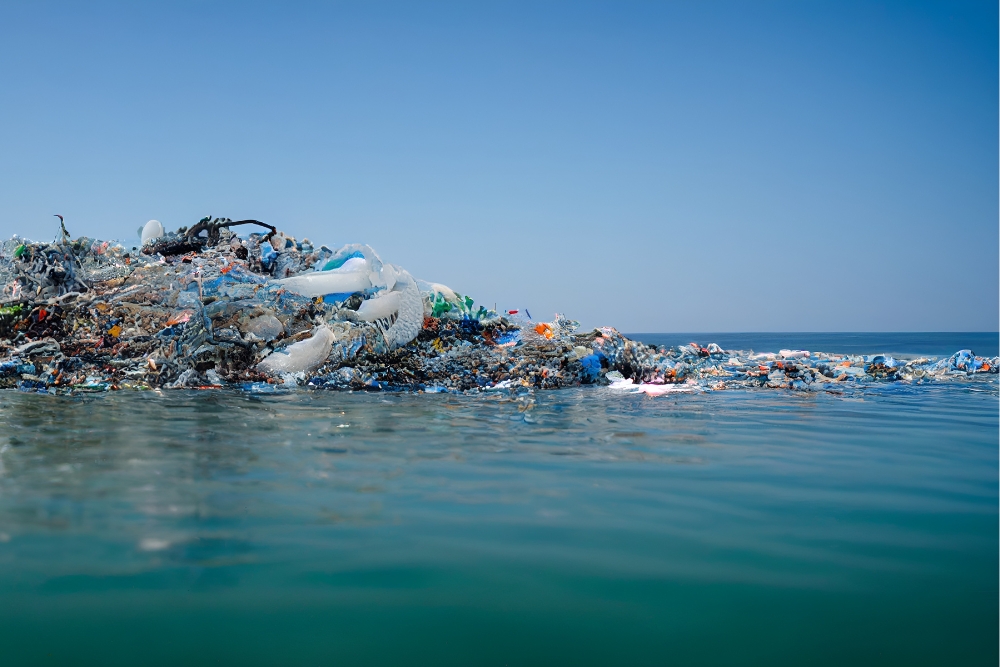Editor’s note: FM Perspectives are industry op-eds. The views expressed are the authors’ and do not necessarily reflect those of Facilities Management Advisor.
The Great Pacific Garbage Patch, located between California and Hawaii, is a floating monument to our collective inaction. It continues to grow, fed relentlessly by the 20 million tons of plastic waste that flow into our waterways each year. Much of that waste originates not offshore, but in our own neighborhoods, parks, and office buildings. According to the World Wildlife Fund, up to 80% of the 50 to 75 trillion pieces of plastic in the ocean originate from land-based sources. One of the biggest culprits? Single-use plastics like water bottles, cups, and cutlery.

Americans purchase a staggering 50 billion plastic water bottles annually. That’s roughly 150 bottles per person, per year. While many of us may think we’re doing our part by recycling, the reality is far more sobering. The National Association for PET Container Resources reports that only about 30% of plastic bottles ever make it to a recycling facility. The rest end up in landfills, incinerators, or—more often than we’d like to admit—our waterways and oceans.
As much of the workforce heads back into the office during the week, facilities and operations leaders play a pivotal role in advancing sustainability. This includes implementing environmentally friendly water habits that can have a big impact on our oceans and the workplace. According to a Deloitte survey, nearly 70% of employed adults expect their employers to invest in sustainable practices. In fact, respondents aged 18-34 (the next generation of the workforce) are even more likely to take a company’s environmental practices into consideration when deciding whether or not to work there. Therefore, organizations must consider their sustainability habits when asking employees to return to the office.
A recent study from Vivreau found that 92.9% of U.S. businesses plan to prioritize sustainability initiatives over the next 12 months. To do so, facilities and office managers must implement practices that engage employees in environmentally friendly habits. A few examples include:
Reduce Single-Use Plastics
Every year, Americans throw out 20 billion Styrofoam cups, each taking an estimated 500 years to biodegrade. Offices can cut down their role in the pollution by eliminating Styrofoam and plastic options and replacing them with reusable drinkware and cutlery.
Encourage Reusable Water Bottles
Reusable water bottles combined with an eco-friendly water cooler eliminate the need for plastic water bottles. For every person who uses a reusable bottle, it prevents approximately 156 plastic bottles from entering our waterways each year.
Partner with Environmental Organizations
Partner with organizations focused on plastic recycling and ocean cleanup to help reduce your company’s carbon footprint. For example, Vivreau partners with 4ocean, an organization working diligently to clean the plastic out of rivers, oceans and coastline. Through this partnership, Vivreau and its clients were able to remove 207,000 plastic bottles from our oceans in 2024 alone.
Limiting plastic use in offices is essential to providing a healthy, sustainable environment for employees. For many offices, the most logical and easily executed first step is to transition from plastic water bottles to eco-friendly water coolers designed for modern corporate environments. By taking simple, intentional steps to eliminate single-use plastics in the workplace, we can protect our oceans, meet employee expectations, and build a future that aligns profit with purpose.
Tom Spillane is the vice president of technical excellence at Vivreau, a sustainable water solution provider.

